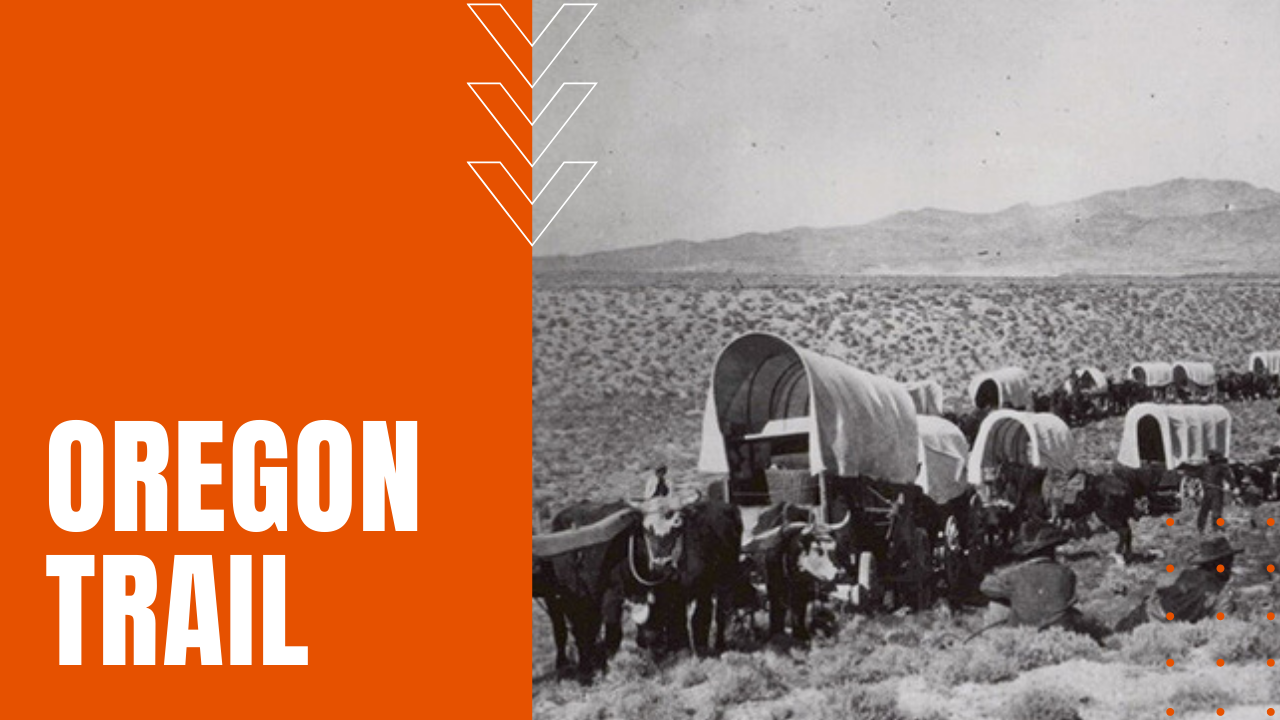What was the Oregon Trail?

After Lewis and Clark’s expedition mapped the western United States from 1803 to 1806, both their routes through the Rocky Mountains—known as the Lemhi and Lolo Passes—proved to be far too treacherous for prairie schooners, which would become the vehicle of choice for some 400,000 settlers, farmers, ranchers and miners as they emigrated toward the Pacific Ocean.
The Oregon Trail
Over the coming decades, fur traders and Christian missionaries forged less challenging routes to the west coast, eventually creating a 2,170-mile east-west passage known as the Oregon Trail. Originating in Missouri, the eastern half of the Trail would also be used by travelers who veered off part way to trek the California Trail, the Mormon Trail and the Bozeman trail, helping to further populate the American west, but without the Oregon Trail and the Oregon Land Act of 1850, settling the west would have been a significantly more challenging proposition in America’s belief in Manifest Destiny.
How Long was the Oregon Trail?
The Oregon Trail’s 2,170 miles required five to six months to travel across the rugged terrain—sometimes lasting up to a year for less fortunate travelers. Emigrants had to sell homes and business back east, along with possessions too burdensome for the bed of a six-foot by twelve-foot prairie schooner.
Next came the purchase of hundreds of pounds of supplies, including flour, sugar, bacon, coffee and salt, plus rifles and ammunition for hunting game or warding off hostile Indians. In addition to staples, prairie schooners carried water and tar buckets, along with extra wheels and axles, which were frequently broken over rugged terrain.
Settlers breathed easier if they reached Independence Rock by the Fourth of July, which marked the halfway point in their journey west. So many pioneers etched their names on the rock, that it soon became known as the “Great Register of the Desert.” Even so, daunting struggles lay ahead, including the Rocky Mountains, followed by a desert passage to Fort Hall, which was the second trading post along the Trail. Next came the Snake River Canyon and the Blue Mountain Crossing before reaching the end of the Trail at Oregon City.
According to the Oregon California Trails Association, almost one in ten pioneers who embarked on the Trail died along the way, not just from hostile Indian attacks, but from infectious diseases and misfortunes such as drowning, making the Oregon Trail a mass graveyard for tens of thousands of men, women and children.
Upon the completion of the transcontinental railroad in 1869, the Oregon Trail quickly fell out of favor with west-bound travelers, instantly shrinking the journey from six months to one week, making the Oregon Trail a vital yet bygone passageway in America’s quest for westward expansion.
